St John's Wood 1919-1995 personal memories of Ken Brown
S.R. Brown & Sons, grocers
Arrival in St John’s Wood in 1919, aged 6
The 1914/18 war was over, father had been de-mobbed and the decision had been taken to move from the flat in Kilburn where I was born, and take up residence over the business in Ordnance Road, N.W.8 where my father had recently resumed his position as manager, which he had temporarily halted in 1915 when he had joined H.M. Forces. Exciting times; the war had been a little frightening and one still occasionally looked skywards where the Zeppelins had once intimidated us.
My Grandmother and I had just returned from a six weeks holiday in Hampshire where we had been despatched while the house was being re-decorated and prepared for the sole purpose of accommodating the Brown family. I still have a feeling that it was I that had to be spirited away during these operations; I do not think I would have been trusted with such unlimited quantities of paste and paint over such a long period. On arrival, my first impression, one I still very clearly remember, was the fresh air of new wall paper and the old fashioned smell of lead paint. This was a palace; the flat in Kilburn decidedly took second place as we were very poor then – even a six year old could sense that – but walking through those lofty rooms I rose to ten feet tall and St.John’s Wood was now my oyster.
It was about eight o’clock on that first evening that, much to my surprise and very late for me to still be up, my mother announced that we were going shopping. It was not very alarming as it merely consisted of walking down Henstridge Place which, in those days ran from Ordnance Road to Woronzow Road, and purchasing fruit and vegetable from a man named Ted Elcome who plied his wares from a horse and cart and, apparently, was available until well after ten o’clock at night. Summer or Winter, wet or fine, Ted was always to be found somewhere between St.Edmund’s Terrace, where he stabled his horse, and the lower end of Henstridge Place where he and his family lived. This was the first colourful character I was to meet and he was still around many, many years later. During the ensuing bargaining between mother and Ted, I became aware that I was the centre of interest from a small body of local children whose “grape vine” had apparently heralded our arrival well in advance. They seemed to be more in the nature of a reception commitee which soon proved to be correct as, after much whispering and shuffling, one particularly scruffy individual detached himself from the group and slowly ambled over to me. He was a little older than I but I was a tall six year old and this, to me, cancelled out any advantage his extra age may have given him. One short pace away he stopped and there started a full one minute eye to eye confrontation. I was not in the least abashed for, as I have said, my ego was running high and this particular specimen was no worse than those they bred in Kilburn. Whether or not this incident would have developed into something more physical I shall never know as mother, now finished with her shopping, thrust my adversary aside, took me in a firm grip at the back of my collar and, without any more fuss, marched me back to the fresh paper and paint. Although St. John’s Wood was not entirely new to me, my father had brought me up from Kilburn on many occasion, this was the first time I was to sleep here and how was I to know that it was just raising the curtain on well over fifty years of a very happy, hectic and extremely friendly life in this wonderful and interesting place.
Growing up in the Wood
Today, you have a Unigate depot in Acacia Road [no longer] but, when I was a proud little six to seven year old, it was a farmyard complete with cows, chickens etc, and the cows were put out to pasture in the fields around the area. St. Johns Wood High Street, then just High Street, sported an abattoir; it was behind the butcher’s shop on the corner of Charles Lane and, horrible thought, we kids used to rush up there from school on slaughter days to watch them swill the blood down the gutter. I often wonder why I did not turn vegetarian.
Cricket was my first love and, even as a youngster, it was off to Lords and up the Clock Tower, free in those halcyon days, whenever the opportunity presented itself. There was another great annual attraction at Lords for us that has long since gone. Each year, after the Eton and Harrow match, we would queue up at the back exit until all of the spectators had gone and there wait patiently, each carrying two basins apiece – one for strawberries and the other for cream. This, the surplus from the days supply, was cheerfully shared out to us by members of Lords staff. Thank goodness they had little or no refrigeration in those days.
Long before St. George and his dragon were placed in the centre of St. Johns Wood roundabout, we had a large bed of evergreen shrubs surrounded by a circle of high, spiked railings and, believe it or not, a taxi rank complete with a mobile kitchen for the use of the cabbies. This particular piece of ground was, we were told, an old plague pit where the bodies were brought at night from London in 1665 for mass burial and, when full, was filled in and no future building on it allowed. We had a station on the south side of this site known as St. Johns Wood, Metropolitan Line. It was later renamed Lords Station and eventually demolished. The line ran north from here and the next station, now gone, was Marlborough Road and was situated on the corner of Queens Grove and Finchley Road. It was not until the 1930’s that the Bakerloo line was built so giving us the existing station at the corner of Acacia Road.
How well can I remember the old Eyre Arms, situated until the early 1920’s on the site where now stands Eyre Court. A large building that was, through the years, an old staging post for stage coaches to and from the North, an hotel, public house, entertainment hall for boxing and, in later years, sported a garage where I heard some of the first radio broadcasting. In Lisson Grove, once one of the elite parts of the ‘Wood’, we had a power station with large wooden structures belching steam and smoke over the area at all hours and, to my young eyes, coal stacks that simply must have been well over a mile high. Today, gone has the power station, the steam and my mountains of coal and all they have given you in exchange is a colony of council flats. I doubt if todays six year olds regard them with much awe and respect.
I can see no object in lingering over my school days; enough to say that I graced the local Barrow Hill Road School with my presence-I do not think they were very impressed-and then scholarshipped to Haverstock Central School, leaving there at the age of seventeen to join my now ailing father in his business. The rod had not been spared during these years and the child certainly not spoiled as a whacking at school usually secured a bonus of further chastisement should the news reach home. It usually did.
Working in the shop
Here I must point out that while at school, in 1927 to be exact, my father had obtained the ownership of the business he had managed for so long and now that I could join him, in 1930, we had the beginning of the family concern. Although I was full of youthful ideas and determination to press on in the business, I must freely admit that my first love was cricket and perhaps I paid more attention to this than to father’s painstaking training and it was not until he died quite suddenly on Saturday lunch time in October 1933, that I was starkly aware that I was, perhaps, a little lacking in the not so gentle art of shop keeping. I now had to take stock of myself and a much longer, harder look at the neighbourhood. I found things had changed, were still changing and, undoubtedly would go on changing.
Of course, during those early years we had to contend with the depression and the general strike of the 1920/30’s. People were suffering and unemployment topped the three million mark. People were suffering and we also stood very close to the edge of bankruptcy. Happily we avoided the awful consequences of this but, in the end, it proved too much for my father and, as I have said, he succumbed to the pressures in 1933, leaving this world and a grief stricken family at the early age of fifty three.
Of the many who did not escape the ravages of the depression, one comes to my mind by the name of Harley-Burt. Residing in Norfolk Road with the reputation of being a millionaire, the family business collapsed and he solved his problem by taking his own life and so left behind a widow who was now almost completely destitute. I mention this particular case as I had and still have a great admiration for this, now deceased, lady. Having been used to almost any luxury she desired, she very quickly and bravely adjusted to the situation and to live for the rest of her life in a bed-sitter in Hampstead.
Before the disaster this rather grand lady did her own shopping and I used to stand and gaze at her fine clothes and feathered hats with considerable awe. At the very early age of seven, my father, always with a sense of humour and seeing the glamorous person in the shop, whispered to me to go and see what she wanted. Terrified, I approached her with great caution and , in a high piping voice, said, “Yes miss?”. Throughout the passing years she still walked from Hampstead to St. John’s Wood to do her weekly shopping and, for all her misfortunes, poverty and the many years between, would often give me a wry smile and murmur, “Yes miss?”. A very brave and gracious person.
Local elections in the 1920’s and early 1930’s were far more personal and politics had not yet made their full impact on the Town Halls. I mention this because the candidates were, in the main, local people who all had their own particular followers supported, in turn, by their children. No polling day went by without the large groups of youngsters winding their way through the streets chanting their slogans for their parents choice of candidate and, to add to the noise, lustily banging dust bin lids, old tin cans or any other pieces of flotsam they could find and which would produce the maximum amount of unbearable din. Although there were always more than one faction on the road at the same time I cannot remember any violent clashes. Heaven knows what would have happened if there had been, considering the potential weapons they carried.
Wartime
1938 was Munich, 1939 was war and in 1940 I was to join H.M.Forces. In that same year, on Boxing Day, I married Blanche who had worked by my side since 1934 and I felt that this was, undoubtedly, the most sensible thing I had ever done. I now had this very lovely, loving girl whom I could, with all my heart, now call my wife.
In 1943, the little German Corporal changed the whole course of my life by having the audacity to completely demolish the old shop at 16 Ordnance Hill. This was in the early hours of the 18th January but, as my dear wife, mother and our three week old daughter, Susan, were rescued with only minor injuries, all is forgiven but, let me be very clear, never forgotten.
I was de-mobbed in early 1946 and then started the whole game of picking up the threads once more. Four weeks to the day we re-opened at no 37.
After the War
My mother, to whom the business had been left by my father in 1933, made the whole affair over to me in 1951. In 1952 we obtained a direct lease with the Eyre Estate helped by the generous co-operation of the now departed Mr. Wragg. This gave me what is known as a ‘Free House’ and so finally broke the ties and restrictions of the Brewers.
During early repair work on the flank wall of the Charlbert Street elevation of no 37, a complete floor had to be replaced and here, buried between the joists, were found a quantity of oil lamp glasses with the name, “Cozen-Lamp Maker” frosted on them. I have a photo stat copy of a Post Office Directory dated 1871 and this name is recorded here. I am given to understand that this was the original business carried on here. Later, while doing further extensive alterations, an original well was found at the rear of the premises and was one of many such wells to be found in the area and dating back to the water supply of the very early dwellings of St. John’s Wood.
The alterations that I have referred to consisted of an enormous amount of work. A large warehouse was first built at the end of the shop yard, a complete three story annex was joined to the main building which, apart from the extra rooms on the first and second floors, also provided a large store room on the ground floor together with a Staff cloak room and toilet. A new shop front, constructed entirely of Teak, replaced the old side and front windows. This necessitated the removal of the whole front of the premises and inserting a new Rolled Steel Joist to take the place of the old wooden Bressumer (Beam) which had taken the strain of the building for over a hundred years. A forecourt was laid with a low brick surround and an elegant sign post erected to illuminate the name of S.R. Brown & Son. The shop interior was completely gutted and re-fitted with new equipment as were the two new store rooms.
It was now 1953 and all was set to continue the work first started by my father twenty six years earlier. From then on we never looked back and during the next twenty years we gathered around us a multitude of wonderful people both customers and staff but, all of whom I am proud to call friends. Who could replace my dear wife, always working and, it seemed, always raising a family. A wonderful, wonderful partner – full of love, compassion, foregiveness and a mother beyond compare. Maxie, loyal and hard working to a degree and friend without equal. Pat, never – well, hardly ever – caught taking a moment off and finally becoming an almost adopted member of the family.
Others came and went but, in going, always departed as friends. My mother died in late 1960 at the grand old age of 82. This, to me, was the end of an era. Although everything still continued to flourish, it became painfully obvious in 1962 that my sight – a problem that I had contended with for many years, was now deteriorating quite rapidly. In order not to linger over the next ten years, it is sufficient to say that the eyes won and I lost. So, after fifty years the saga was over – albeit many years to soon. When our successors were doing more alterations to the shop interior, they found the presence of a cellar under the premises. This was quite unknown to me and, as they had no reason to do any more work that was necessary, it was never fully opened. Who knows, perhaps a few more secrets for another generation to find.
How does one say goodbye to a lifetime? One does not. I certainly cannot so I shall just continue to sit back from time to time, close my eyes and again wander around my St. John’s Wood with my friends and memories that are so very dear to me.
Written by Kenneth Brown ( September 1913 – January 1995) and given to us by his son.

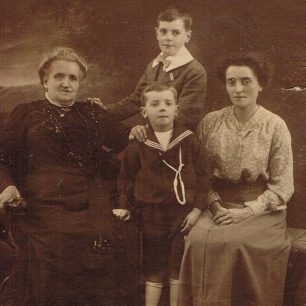
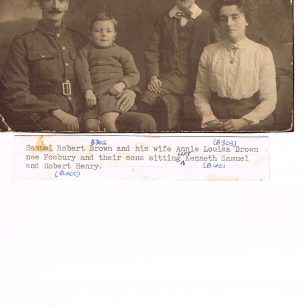
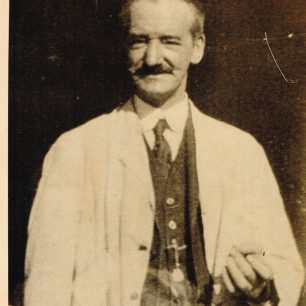
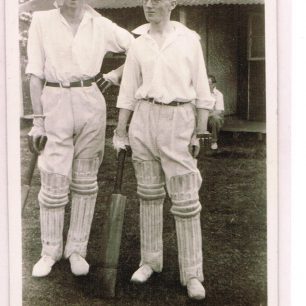
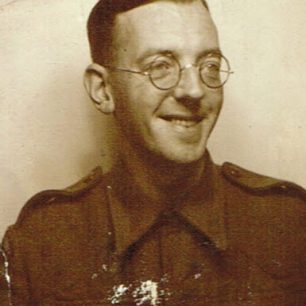
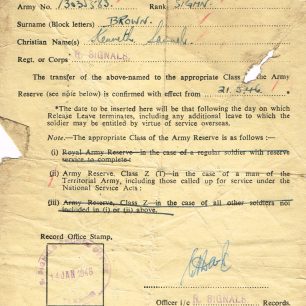
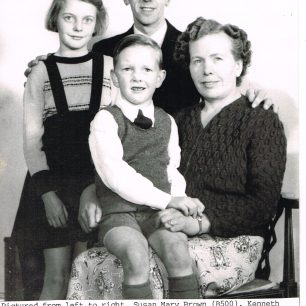
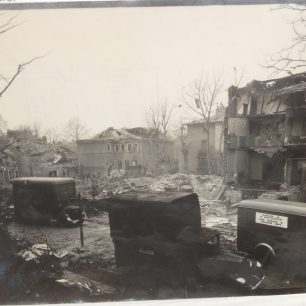
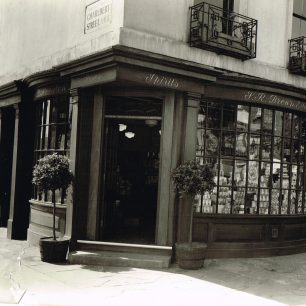
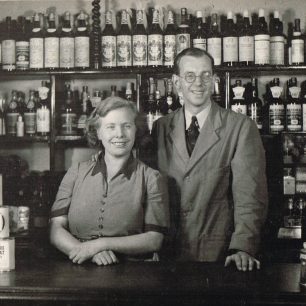
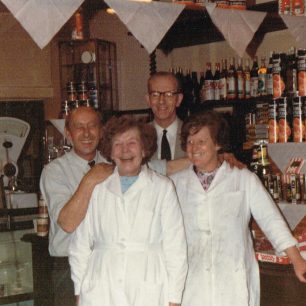
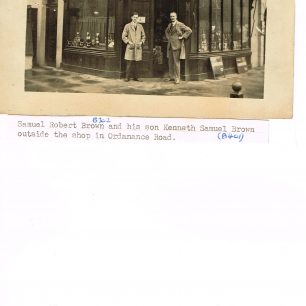
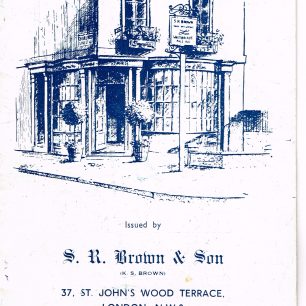
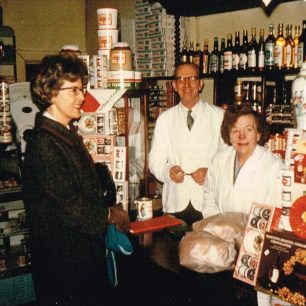
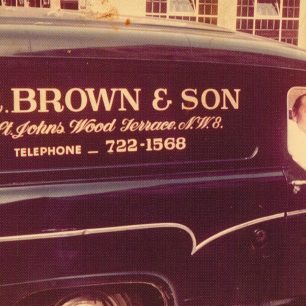
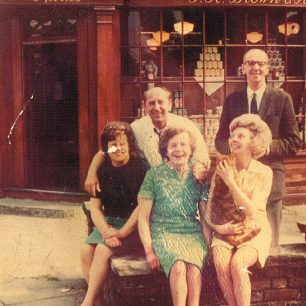
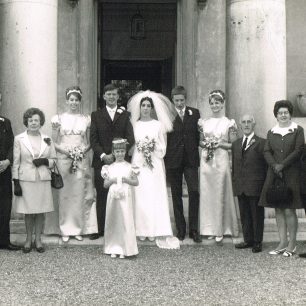



Comments about this page
My great great grandparents lived at 55 Ordnance Road in the 1860’s. I wondered what kind of houses they were before they became the Royal Artillery Barracks.
I would love to hear anything about the Beevor family 49 Charles Lane. These were my grandparents on my dad’s side. They were very poor. Grandma Mary Anne (Annie) Grandad James Robert, son Jim, daughters Lilly, Dolly, Nelly, Violet. We especially want to know anything about granddad’s military experience.
Dear Joan, i remember you so well and also your brother Michael, are you and he still around, if so, please call me sometime on 0208 422 8395. I live in Harrow, regards, Ken.
I remember Kenny and Victor Poulton and mum Lizzie – they lived opposite us on Church Street estate – before that I lived in a prefab in Aquila Street, St Johns Wood Terrace, and I remember my brother Michael Price being a friend of Freddie Bassett – we went to Barrow Hill school.
I am seeking any information on a Miss Hodille who lived at 55a High Street in the 1930’s
Hi Janet. are you any relation of Freddie Bassett who lived in Edmonton Court. I went to Barrow Hill with him. I am sure you would remember me and the Poulton family from St Johns Wood Terrace. Please let me know, thanks, Ken
Hi Janet, I remember you too and a lot of the others that we went to school at that time together. I have sent details to John, brother, to answer the original question re the READS. Hope you are well and have made good of your life. Graham
I used to go to school with Graham Brown whose family had Browns the Grocers on the corner of St Johns Wood Terrace and Charlbert Street. I often went into the shop with my Mother Clara Bassett.
Hello, my dad and his brothers lived at 4 Ordnance Hill. Now only 1 brother remains and today we were talking about Jordans Fruit Shop. Would you remember them? Leonard Read, Alfred Read, Ronnie Read and Richard Read. Their mum’s name was Olive. It would be so good if you remembered them as I am doing my dad’s life history. They were born between 1926 and 1932. The father was Alfred William Read. Would really appreciate it if you could let me know if you remember any stories of them. My email is teresagrindy@yahoo.com
Add a comment about this page